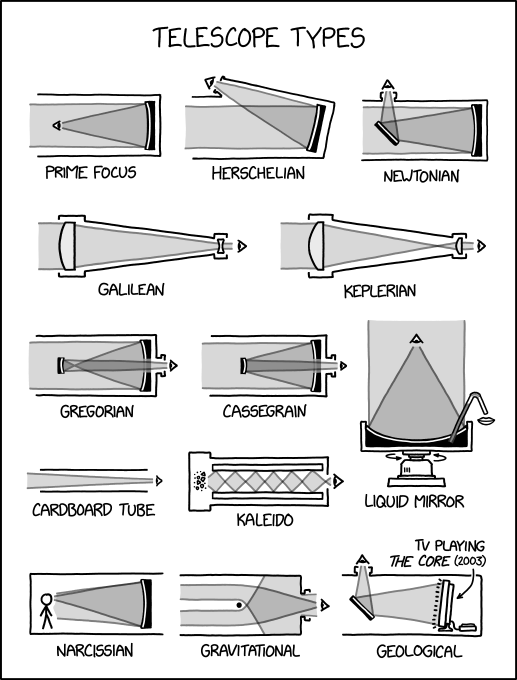
unsubstantiated character assassinationand consequently awarded me significant damages. That's not what this post is about, as such. It's about the sole meaningful claim made that tied me to the abuse.
In the defendants' defence and counterclaim[1], 15.27 asserts in part
The facts linking the Claimant to the sock puppet accounts include, on the IRC network: simultaneous dropped connections to the mjg59_ and elusive_woman accounts. This is so unlikely to be coincidental that the natural inference is that the same person posted under both names. "elusive_woman" here is an account linked to the harassment, and "mjg59_" is me. This is actually a surprisingly interesting claim to make, and it's worth going into in some more detail.
The event in question occurred on the 28th of April, 2023. You can see a line reading
*elusive_woman has quit (Ping timeout: 2m30s), followed by one reading
*mjg59_ has quit (Ping timeout: 2m30s). The timestamp listed for the first is 09:52, and for the second 09:53. Is that actually simultaneous? We can actually gain some more information - if you hover over the timestamp links on the right hand side you can see that the link is actually accurate to the second even if that's not displayed. The first event took place at 09:52:52, and the second at 09:53:03. That's 11 seconds apart, which is clearly not simultaneous, but maybe it's close enough. Figuring out more requires knowing what a "ping timeout" actually means here.
The IRC server in question is running Ergo (link to source code), and the relevant function is handleIdleTimeout(). The logic here is fairly simple - track the time since activity was last seen from the client. If that time is longer than DefaultIdleTimeout (which defaults to 90 seconds) and a ping hasn't been sent yet, send a ping to the client. If a ping has been sent and the timeout is greater than DefaultTotalTimeout (which defaults to 150 seconds), disconnect the client with a "Ping timeout" message. There's no special logic for handling the ping reply - a pong simply counts as any other client activity and resets the "last activity" value and timeout.
What does this mean? Well, for a start, two clients running on the same system will only have simultaneous ping timeouts if their last activity was simultaneous. Let's imagine a machine with two clients, A and B. A sends a message at 02:22:59. B sends a message 2 seconds later, at 02:23:01. The idle timeout for A will fire at 02:24:29, and for B at 02:24:31. A ping is sent for A at 02:24:29 and is responded to immediately - the idle timeout for A is now reset to 02:25:59, 90 seconds later. The machine hosting A and B has its network cable pulled out at 02:24:30. The ping to B is sent at 02:24:31, but receives no reply. A minute later, at 02:25:31, B quits with a "Ping timeout" message. A ping is sent to A at 02:25:59, but receives no reply. A minute later, at 02:26:59, A quits with a "Ping timeout" message. Despite both clients having their network interrupted simultaneously, the ping timeouts occur 88 seconds apart.
So, two clients disconnecting with ping timeouts 11 seconds apart is not incompatible with the network connection being interrupted simultaneously - depending on activity, simultaneous network interruption may result in disconnections up to 90 seconds apart. But another way of looking at this is that network interruptions may occur up to 90 seconds apart and generate simultaneous disconnections[2]. Without additional information it's impossible to determine which is the case.
This already casts doubt over the assertion that the disconnection was simultaneous, but if this is unusual enough it's still potentially significant. Unfortunately for the Schestowitzes, even looking just at the elusive_woman account, there were several cases where elusive_woman and another user had a ping timeout within 90 seconds of each other - including one case where elusive_woman and schestowitz[TR] disconnect 40 seconds apart. By the Schestowitzes argument, it's also a natural inference that elusive_woman and schestowitz[TR] (one of Roy Schestowitz's accounts) are the same person.
We didn't actually need to make this argument, though. In England it's necessary to file a witness statement describing the evidence that you're going to present in advance of the actual court hearing. Despite being warned of the consequences on multiple occasions the Schestowitzes never provided any witness statements, and as a result weren't allowed to provide any evidence in court, which made for a fairly foregone conclusion.
[1] As well as defending themselves against my claim, the Schestowitzes made a counterclaim on the basis that I had engaged in a campaign of harassment against them. This counterclaim failed.
[2] Client A and client B both send messages at 02:22:59. A falls off the network at 02:23:00, has a ping sent at 02:24:29, and has a ping timeout at 02:25:29. B falls off the network at 02:24:28, has a ping sent at 02:24:29, and has a ping timeout at 02:25:29. Simultaneous disconnects despite over a minute of difference in the network interruption.
Time and circumstance conspired to keep me from reviewing the second book in the Cemeteries of Amalo book, The Grief of Stones, but today I finished the third book, Tomb of the Dragons and I do have time to review this third and final book in the trilogy.
This is NOT a spoiler-free review.
Tomb of the Dragons retains much of what I loved about the first two books, including Thara’s character and his investigations into the underbelly of Amalo, with a healthy helping of Ethuveraz politics.
Thara is having to adjust to the events at the end of the last book, and here, I feel, is where we truly see how important his calling is to him—how he handles losing it. It gives some good perspective to why he is so dogged in pursuing his work goals—his calling really is his sense of purpose, his life. Watching Thara grapple with this change and its indefinite consequences was fascinating.
However, it also retains in greater measure some of the things that I didn’t love about the earlier books, including Addison’s obsession with minutiae. I can only read about the characters traveling on this or that tram line so many times before my eyes start skipping lines to the things that really matter. This would bother me less if it didn’t feel like it came at the expense of more important things.
( Read more... )The first in a series, mostly set-up apparently.
( Read more... )
Martyr! is a beautiful book about the very human search for meaning in our lives, but it also is not afraid to shy away from the ugliness of that search. It juxtaposes eloquently-worded paragraphs of generational grief with Cyrus waking up having pissed the bed because he went to sleep so drunk the night before. Neither of these things cancels the other out.
Everyone in Martyr! is flawed, often deeply, but they're all also very real, and they're trying their best; they aren't trying to hurt anyone, but they cause hurt anyway, and then they and those around them just have to deal with that. Martyr! weighs the search for personal meaning against the duty owed to others and doesn't come up with a clean answer. What responsibility did Orkideh have to her family as opposed to herself? What responsibility did Ali have to Cyrus as opposed to himself? What responsibility does Cyrus have to Zee, as opposed to his search for a meaningful death?
Cyrus' story is mainly the post-sobriety story: He's doing what he's supposed to, he's not drinking or doing drugs, he's going to his AA meetings, he's working (after a fashion)...and what's the reward? He still can't sleep at night and he feels directionless and alone and now he doesn't even have the ecstasy of a good high to look forward to. This is the "so what now?" part of the sobriety journey.
It's also in many ways a family story. Cyrus lost his mother when he was young and his father shortly after he left for college, and he spends the book trying to reckon with these things and with the people his parents were. Roya is the mother Cyrus never knew, whose shape he could only vaguely sketch out from his father's grief and his unstable uncle's recollections. Ali is the father who supported Cyrus in all practical ways, and sacrificed mightily to do it, but did not really have the emotional bandwidth to be there for his son. And there are parallels between Cyrus and Roya arising later in the book that tugged quite hard on my heartstrings, but I won't spoil anything here.
Cyrus wants to find meaning, but seems only able to grasp it in the idea of a meaningful death--hence his obsession with martyrs. The idea of a life with meaning seems beyond him. He struggles throughout the book with this and with the people trying to suggest that dying is not the only way to have lived.
I really enjoyed this book and I think it deserves the praise it's gotten. I've tried to sum up here what the book is "about," but it's a story driven by emotion more than plot. It's Cyrus' journey and his steps and stumbles along the way, and I think Akbar did a wonderful job with it.
This is one of those middle-of-the-road books that was neither amazingly good nor offensively bad, and therefore I struggle to come up with much to say about it. That makes it sound bad, but it isn't--I enjoyed my time with it. I thought Ghatage did a good job with exploring life on the precipice of great political change, although the history and politics of 1940s India is more backdrop to the family drama than central to the story. I liked Mohini and her family; because the nature of her illness necessitates a lot of rest and down time, Mohini is naturally a thoughtful child, as her thoughts are sometimes all she has to amuse herself. However, she never crosses the line into being precocious, which was a relief.
Neither did I feel like the book leaned too hard on Mohini's illness to elicit sentimentality from the reader. Obviously, an illness like hers is the biggest influence on her life, and on the lives of her immediate family, and there are many moments you sympathize with her because she can't just be a child the way she wants to be, but I didn't feel like Ghatage was plucking heartstrings just for the sake of it.
Reading the relationships between Mohini and her family was heartwarming, especially with her grandfather, who takes great joy in Mohini's intellect and is often there to discuss the import of various societal events with her.
Ghatage's descriptive writing really brings to life the India of the time, with the colors, smells, sounds, and sights that are a part of Mohini's every day.
It reminded me of another book I read about a significant event in Indian history (the separation of India and Pakistan) told through the perspective of a young ill girl, Cracking India.
On the whole, this was a sweet, heartfelt book. It's not heavy on plot, but if you enjoy watching the story of a family unfold and the little dramas that play out, it's enjoyable.
The tales continue. Spoilers for the earlier ones ahead.
( Read more... )




